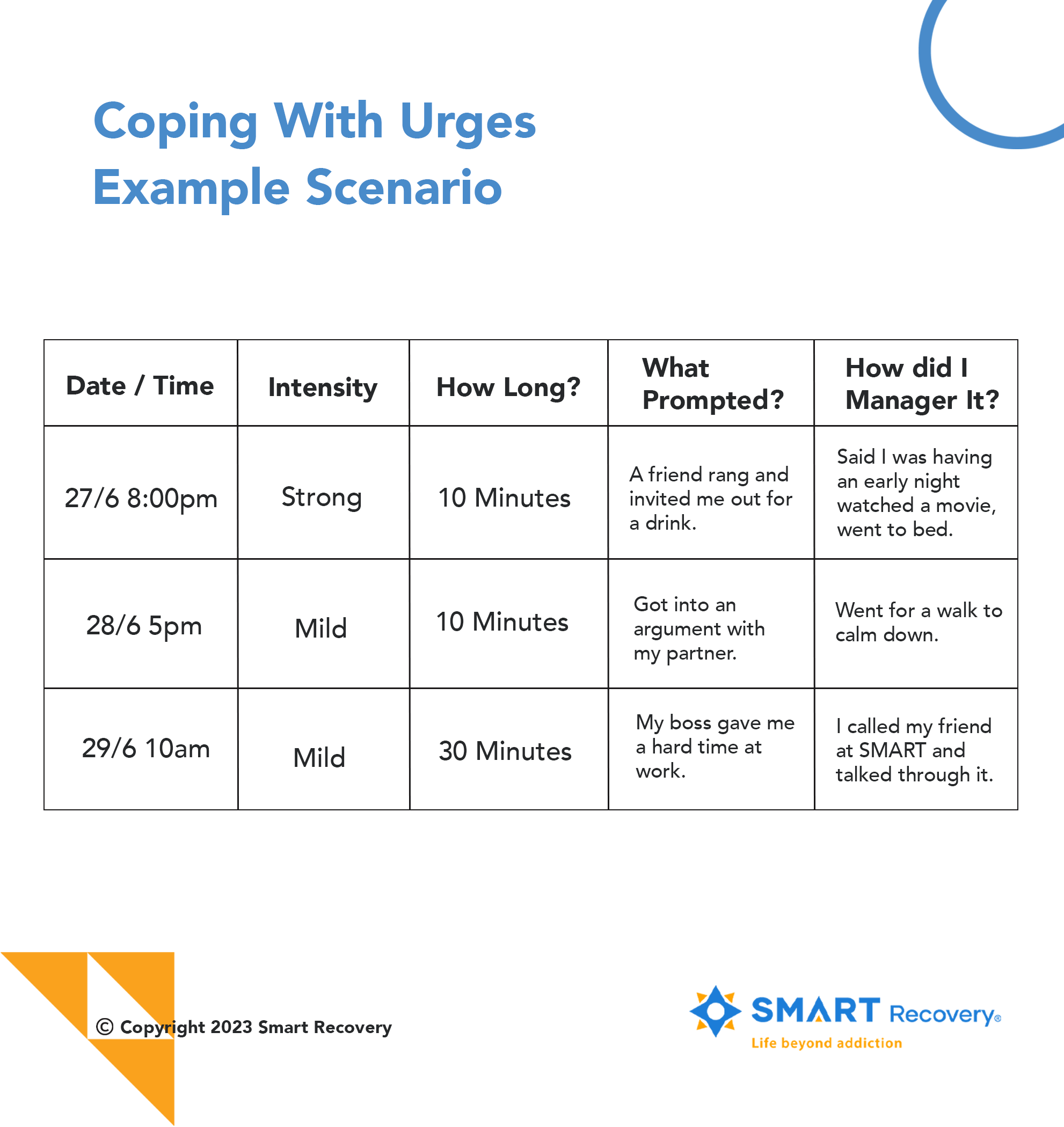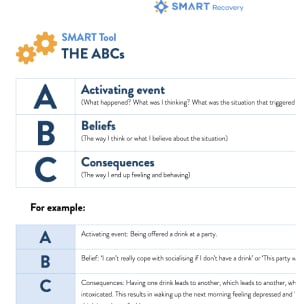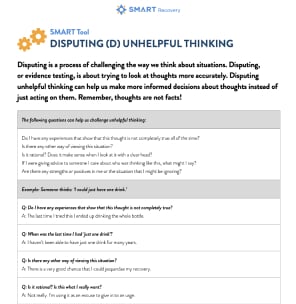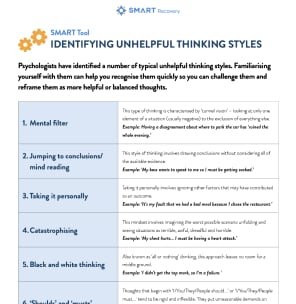Tool Overview
When to Use This Tool
How To Use This Tool
By keeping a record of urges it is possible to see:
-
That urges are time-limited
-
That urges often arrive at particular times and in particular situations — in other words, they have a recognisable or predictable trigger.
This record can help us to understand urges and be less driven by them. It can also help in avoiding potential triggers. Sometimes, just by taking notice of a behaviour, it begins to change.
Once you have a better understanding of your experience of urges and cravings, you’ll need different coping strategies in place. Some suggestions for coping with urges are listed below, but group participants will also be able to share ideas with you about what has worked for them.
Related Tools
View all- Tool
Urge Log
An awareness and understanding of urges is crucial to recovery. One way to understand urges is by recording them. After a few entries, participants may notice patterns and similarities about their urges. The log then becomes a road map that will help them to anticipate situations and emotions that may trigger urges and plan ways to avoid recognized triggers or distract themselves from the urge until it passes.
- Tool
Refusal Skills
When others invite us to engage in a behaviour of concern, this can be one of the most difficult triggers to resist. It's a very common stumbling block on the path to change. Being prepared in advance for these situations and developing refusal skills can increase the chance of successfully avoiding a slip-up.
- Tool
Maintaining Motivation
The maintaining motivation worksheet encourages us to remind ourselves why we wanted to make our change. It asks us to think about how far we’ve come and how the changes we’ve made have impacted our life.
Tool Overview
The ABC Model is a good way of understanding how we can help change our feelings and behaviour by challenging our thinking.
When to Use This Tool
The ABC Model is a good way of understanding how we can help change our feelings and behaviour by challenging our thinking. It helps us uncover beliefs that are not helping us /contributing to the behaviour we are trying to change.
This exercise may be done in the group setting but can also be very useful for participants to look at between meetings.
How To Use This Tool
When working with urges: To analyze a lapse/relapse or to develop coping statements for an anticipated lapse/relapse.
In the event of a lapse, the question to ask is not “What made me do that”, but rather, “How did I talk myself into it?” It is not the urge (A) that causes the lapse (C). It is our beliefs (B); our irrational self-talk.With emotional upset:
The ABC Model can also be used to work with emotional upset or frustrations that may occur at any point in the recovery journey. The ABCs allow us to discover our unhelpful beliefs which contribute to emotional upsets. Disputing helps us eliminate our irrational thinking so we can both feel better and do better. In SMART Recovery we teach that we feel the way we think; it’s not unpleasant events that disturb us, it’s the way we think of them. By changing our thinking, we change how we feel.Identifying and Disputing Unhelpful Thinking.
Disputing is a process of challenging the way we think about situations. It’s about trying to look at thoughts more accurately. Disputing unhelpful thinking can help us make more informed decisions about thoughts instead of just acting on them. Balanced thinking leads to effective new beliefs.



